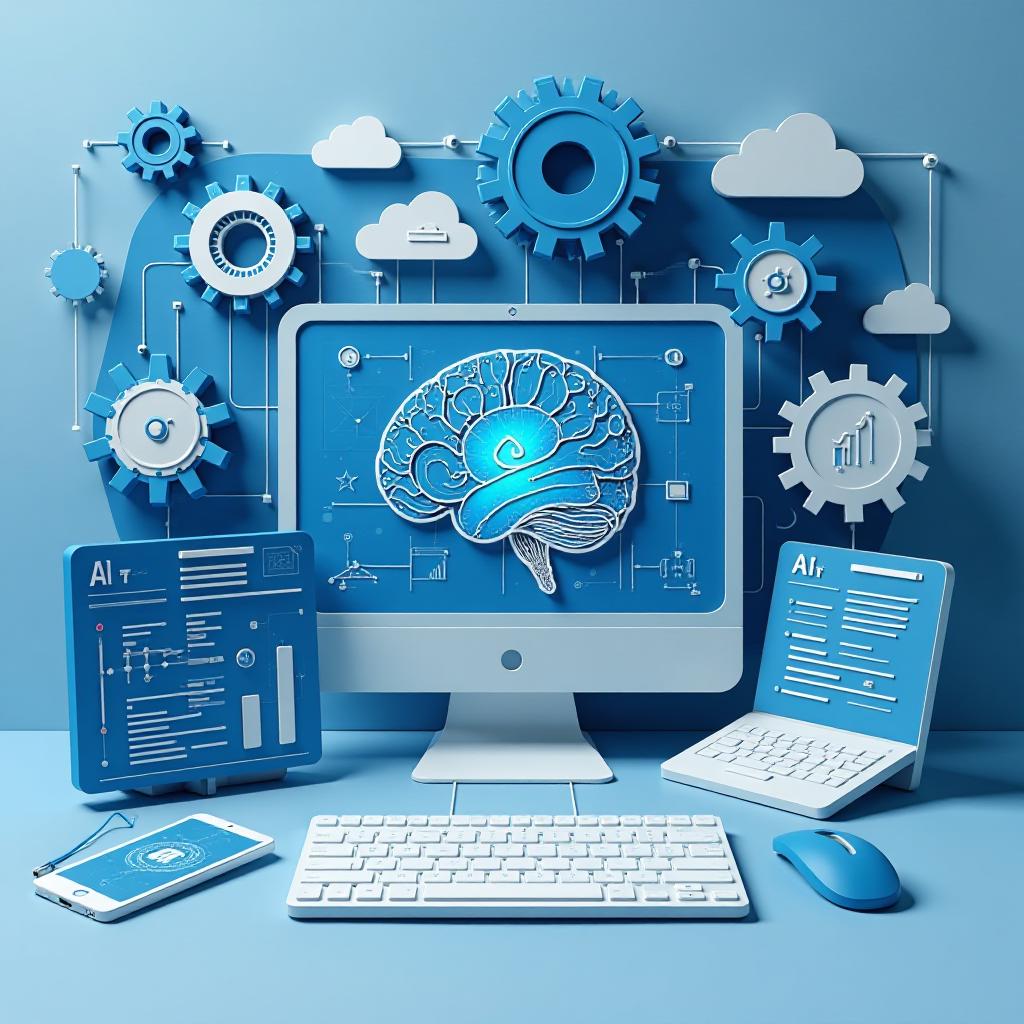
The Role of Artificial Intelligence in Development
Analyzing Developer Utilization and Trends
ABSTRACT
This white paper examines how developers are leveraging artificial intelligence (AI) in programming, based on findings from the recent Evans Data Corp. Global Development Survey Report. It highlights five critical areas where AI is making an impact: streamlining operational tasks, embedding AI components into applications, developing machine learning algorithms, utilizing cloud-based AI models, and employing AI-driven development tools. The paper also explores regional differences in AI adoption across North America, EMEA, Latin America, and APAC, revealing how local industries and infrastructure shape these trends. Additionally, it addresses the challenges developers face, including skill shortages, ethical concerns, and the complexities of integrating AI with legacy systems. This white paper provides an in-depth analysis of the survey results, explores factors influencing adoption patterns, and assesses the transformative potential of generative AI across various industries, positioning AI as a key driver for innovation in tech development.
Table of Contents
Introduction
AI in Development: Current Trends
- Simplifying Operational Tasks
- Embedding AI Components into Applications
- Developing Machine Learning Algorithms
- Leveraging Cloud-Based AI Models
- AI-Driven Development Tools
Regional Variations in AI Adoption
- North America
- EMEA (Europe, Middle East, and Africa)
- Latin America
- Asia-Pacific (APAC)
Challenges in AI Adoption
- Skill Gaps
- Ethical Considerations
- Integration with Legacy Systems
The Future of AI in Programming
- Increased Automation
- Democratization of AI Tools
- Collaboration between AI and Human Developers
Final Thoughts
Introduction
 Artificial intelligence (AI) and machine learning (ML) have transitioned from being buzzwords in academic circles and niche industries to becoming integral parts of everyday business processes and software development cycles across the world. These technologies now play a crucial role in enabling organizations to solve complex problems, optimize workflows, and enhance operational efficiency. For software developers, AI has emerged as a transformative tool that not only speeds up the development process but also augments human capabilities to build more intelligent, adaptive, and innovative applications. AI’s reach in programming extends far beyond simply automating repetitive tasks—it's reshaping the entire software development landscape.
Artificial intelligence (AI) and machine learning (ML) have transitioned from being buzzwords in academic circles and niche industries to becoming integral parts of everyday business processes and software development cycles across the world. These technologies now play a crucial role in enabling organizations to solve complex problems, optimize workflows, and enhance operational efficiency. For software developers, AI has emerged as a transformative tool that not only speeds up the development process but also augments human capabilities to build more intelligent, adaptive, and innovative applications. AI’s reach in programming extends far beyond simply automating repetitive tasks—it's reshaping the entire software development landscape.
As AI continues to permeate programming, it’s important to understand how developers are leveraging its potential to create more dynamic and intelligent applications. This white paper delves into insights from a global survey of developers to explore key trends in the adoption and use of AI in programming. We investigate how AI is being used to simplify operational tasks, embed AI components in software, development of machine learning algorithms, and utilization of cloud-based AI models. We’ll also assess regional differences in AI usage among developers in North America, EMEA (Europe, Middle East, and Africa), Latin America, and the Asia-Pacific (APAC) region.
In addition to analyzing these trends, the paper highlights the challenges developers face as they integrate AI into their work, such as skill gaps, ethical concerns, and the difficulties of combining AI with legacy systems. We aim to shed light on the future of AI-driven software development and the impact it will have on industries globally.

